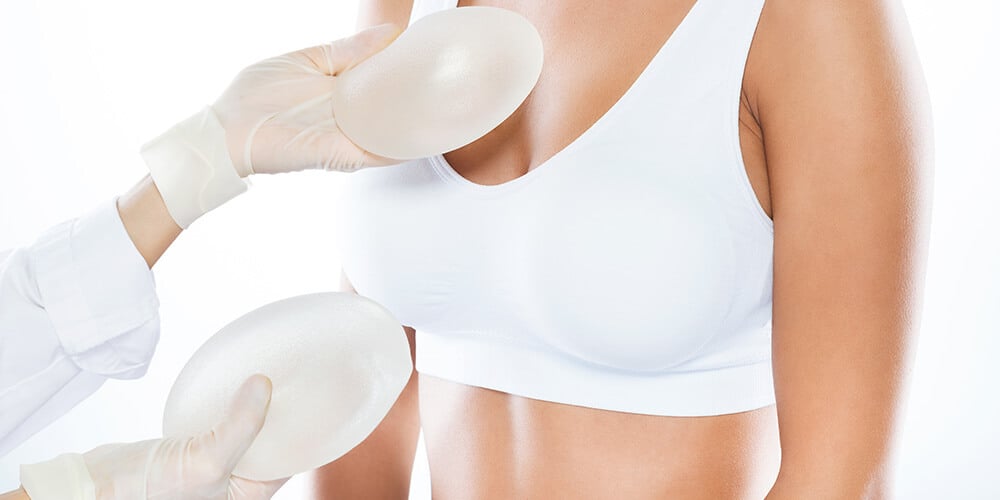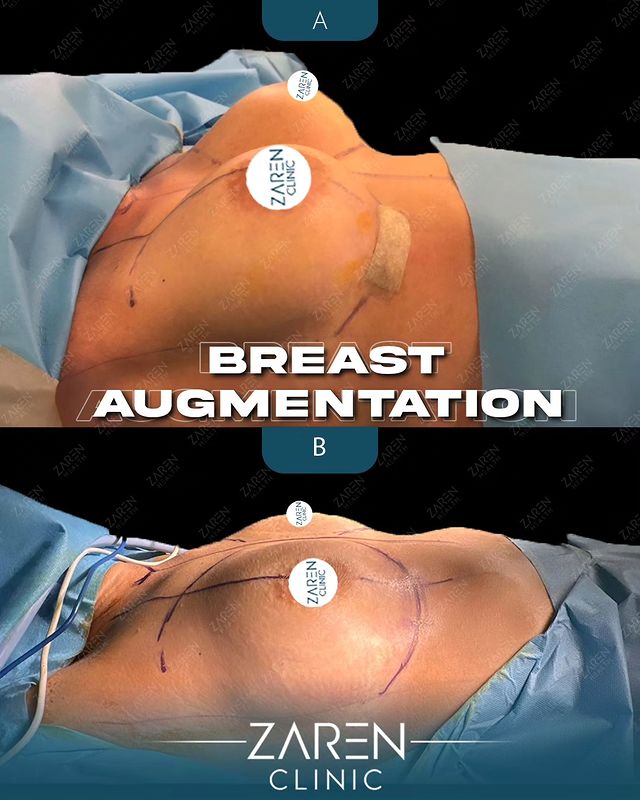Home » Everything You Need to Know About Breast Augmentation Surgery

Breast augmentation is the most commonly performed cosmetic surgery worldwide. People typically consider this procedure for cosmetic purposes, to correct some congenital breast deformities, or to reverse changes in the size and shape of the breasts following pregnancy, aging, and weight loss. Breast enhancement surgery involves the placement of breast implants under the breast tissues, either below or above the pectoral muscles. It connects strongly with society, culture, and the global economy. Hence, the breast augmentation process is a worthwhile area for the medical community to investigate.
The purpose of a woman undergoing breast augmentation process is thought to contribute to the psychological and emotional aspects more than it does to the physical appearance. Issues such as recovering after past surgeries, aging, weight gain and loss, and pregnancies to restore the original contours and volume of the breasts are important chapters in the psychological and emotional context of breast enlargements. Today, the continuation of the search for perfection and the transformation of gender roles in society greatly increase the growth of breast augmentation surgery. Given the importance of this subject, the reader should be aware of adverse effects and complications, and the study aims to provide comprehensive information on the content listed below.
There are many surgical procedures for breast augmentation. The common options are implants and RT (IDPRT). After the choice of breast augmentation process, the surgeon will discuss the various real or false information related to the operation itself, the search for the most suitable breast implants, improve the lasting power of the silicone gel implant, fat transfer to the operation, and advance the result and time to view it. The current nose restoration or dissection technique also plays an important role in selecting the operation preferred by the patient.
Augmentation mammoplasty (breast) or breast enlargement, enlarged breast reconstruction is a specialty of a division of breast enhancement surgery, mammalogy in the medical discipline of plastic surgery. It involves the use of breast silicone elastomer supporting or supporting breast implants accumulated in the subcutaneous glands or gland between the chest wall to increase breast side development. Multiple options for breast implants and incision sites, size, shape, and placement became possible due to advances in surgical techniques and breast augmentation technology. However, the decision was to decide the most suitable surgical technique for the patient, considering the possibility of complications and the characteristics, desires, and demands by the patient. In Section 1 of this research study, this topic is discussed specifically.
Very many different factors have to be taken into consideration whenever choosing a plastic surgeon for your plastic surgery. First, it is very important to research the background and education of the top plastic surgeons, their professional and social memberships, specifically having plastic surgery qualifications and belonging to one or more official medical society. Consider other factors such as the number of years in practicing surgery, and its specializations. The skills of cosmetic and reconstructive surgery are not learned during the duration of a residency, but through constant training and practices. Get top plastic surgeons with high levels of experience and expertise for your procedure to ensure the best results.
Many best plastic surgeon exhibit “before and after” photographs of their own work either on their internet site or in the office. These before-and-after photographs are exactly what you expect: the “before” shot of the patient prior to surgery; the “after” reveals the outcome of surgery. The fact that these pictures appear on a cosmetic surgeon’s website, however is helpful to the patient in that it demonstrates that the doctor is proud of his work and likely indeed worthy of being proud of it. Patients tend to allow cosmetic surgeons to use images made possible by their plastic surgery qualifications, only if they are delighted with the results. When doing research on choosing a plastic surgeon, therefore one should take note of such photographs. They show the effectiveness of the best plastic surgeon work. In total, they will provide you with a reasonable feel for the way in which the surgeon takes your concerns into consideration. Unfortunately, a surgeon typically can only present “after” pictures on a really good webpage.
The immediate breast augmentation recovery period is the most important phase of recovery. Pain is usually more pronounced at this stage, and management should be effective. Breathing exercises are essential to maintain pulmonary function, and they should last for about 6 to 8 weeks because postoperative patients tend to have decreased respiratory volume by 20%. At this stage, exercises can include shoulder bulging and amenities with flexion from 30° to 90° and from hands to elbows, in the sitting position.
At this time of physical breast augmentation recovery, it is important to control activities because the not recommended movements are part of daily life, such as climbing or managing heavy objects. Other examples would be removal, driving, staying for long periods with arms outstretched, movements like pushing and pulling that involve support, and sleeping with arms outstretched upwards. However, we do not want to make the patient passive, and tips are given for during the convalescence of the procedures. It is worth remembering that individual responses to the stress of surgery vary, and those that work well for a patient may not be beneficial to others. This breast augmentation recovery period is the first stage, and other cares would guide other postsurgical steps, like “what to do after returning home” and “last 7 to 15 days of recovery”. Significantly, the recovery period would reach the period of 30 to 60 days, with a focus on exercise, diet, and sun care and scars. This breast augmentation recovery phase is important for personalized rehabilitation and integrates a full recovery protocol. Also, it is essential to emphasize that aesthetic medicine must have a lifestyle-based aesthetic approach and that “Prevention is better than cure”. It makes a significant contribution to personalized care planning.
Breast enhancement surgery is done by making a cut (incision) in the armpit, under the breast, or around the nipple (areola complex). The breast implants are placed into a pocket under the pectoral muscle or fascia. Breast augmentation may carry a number of potential risks. Unfavorable scarring can develop at the incisions made during the Breast enhancement surgery or tummy tuck. Inserting the breast implants can stop milk production in the breasts, but it is still possible to breastfeed if you have had a breast augmentation using a small incision in the armpit. Pain or changed sensation may occur following the breast enhancement surgery.
During your breast augmentation recovery, you will want to wear a surgical bra and dress in a supportive garment like an elastic bandage or support bra. You can help to minimize swelling and support your new contours as you heal by wearing this garment. A surgical bra is mainly used immediately after a breast enhancement surgery in order to remove excess swelling or fluid around the breast implants. Wearing a sports bra can also help the new breast form adjust to your body. Infections, bleeding, and inflammation can occur where the implants are placed. The breasts may look different after surgery (asymmetrical shapes and sizes, changes in nipple sensation, nipple inversion). Breast enhancement surgery complications are unlikely to deter you from enjoying pleasing breast appearance, an improved body shape, and the aesthetic improvements of breast enhancement. If complications develop, a treatment plan can be discussed.
For both types of breast implants, there is a special risk of infection due to the textured (Velcro-like) surface of the shell material. The pectoral muscle must be drilled through to simplify the breast implant enlargement. Due to the increased risk of infection, it is possible to remove these implants and substitute them with breast implants that have a smooth surface. Inflammation of the lining around the implant that leaves it feeling hard is known as capsular contracture. Over-correction of the implants is required to help avoid the implant’s protrusion off the chest wall. For instance, a 450-cc implant may fill a 375-cc tissue pocket.

Informed consent should be obligatory for all women willing to receive a breast enhancement surgery to avoid the immediate and long-term impact of their bodies’ transformations. If a woman gives informed consent for the augmentation and has an average risk of complications, augmentation is beneficial to mental health and personal well-being initially and for one year after the procedure. It is beneficial for the physical aspect of their life for the women who had an average risk and those who had a high risk of complications. All women, regardless of their complications’ risks, experienced high satisfaction with both the implant’s appearance and the process one year after augmentation. The level of satisfaction did not differ among women who received the surgery through the areola, breast fold, or umbilicus. This study shows that postoperative complication treatment is cost-ineffective to the healthcare system and highlights the importance of employing prevention tactics based on measured risk factors in clinical decision making.
Surgery for breast augmentation is helpful to increase QOL, especially at the role-related physical and mental subscale of the domain of the breast module. It helps personal life and self-esteem. Women who express high self-esteem and wanted breast implants for all reasons may derive more benefits. The result of higher sexual and self-esteem was not physical feature related in contrast to a previous study. Planners of cosmetic and reconstructive surgery should focus on women with low satisfaction or low self-esteem for they may derive more benefits from surgery. Women who express low self-esteem or low sexual status should be screened for deviant psychopathology or personality traits, particularly since violent and aggressive behavior may be more frequent. Improvement of the surgical outcome should start with the facilitation of choice among breast implants and accurate information about the effectiveness of surgery for individual patient groups. Future research should be designed to get information on recovery and complications and the causes of disabilities followed by breast enhancement surgery. A guideline ensuring that women can compare their satisfaction with healthy lady’s satisfaction not only women requiring breast surgery is needed to provide value in helping surgeons promoting realistic expectation of the procedure to their clients. In the future, breast enhancement surgery may entail less risk, if new technology emerges. In the meantime, information on the procedure should be included in regular breast care.
Hello!